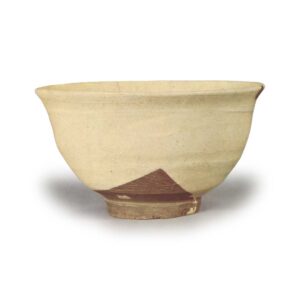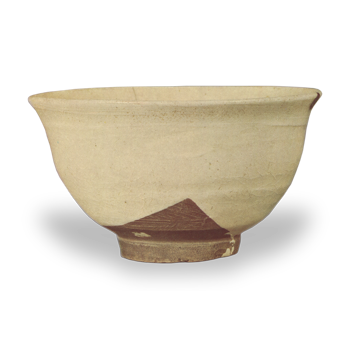




Accessories: Grinding stone, clothing
Box: Paulownia wood, inscription by Matsudaira Fumai
Provenance: Purchased from Kiriya and Teihachi during the Bunka period by Matsudaira Fumai
Dimensions
Height: 7.3–7.8 cm, mouth diameter: 13.0–13.3 cm, foot diameter: 5.4 cm, same height: 0.9 cm, weight: 295 g
This tea bowl is known as “Tamagote” or “Wate” (Yawachi-ka-de). Korean tea bowls brought to Japan during the Edo period were often given highly sensuous names by Edo-period tea masters. Examples include “Somenuki-undo-de” and “Kise-to,” which are particularly notable. The name “Tamagote” derives from the white glaze with a hint of yellow, resembling egg white. When Matsudaira Fumai acquired this tea bowl, he inscribed “Wate” on the box lid. This may be due to the softness of the glaze, but it is also likely that he intended it as a contrast to the “Kente” style.
Tamagote is described in the “Taisho Meiki Kan” as “firm with an egg-like luster and deep color.” Thus, Tamagote is a type of Kante. Indeed, Tamagote tea bowls resemble Kante in both clay and shape. Alternatively, the difference between Kante and Tamagote may have arisen from variations in firing techniques.
Potter
Clothing
Box: Paulownia wood, white lacquer, inscription by Matsudaira Fumai



